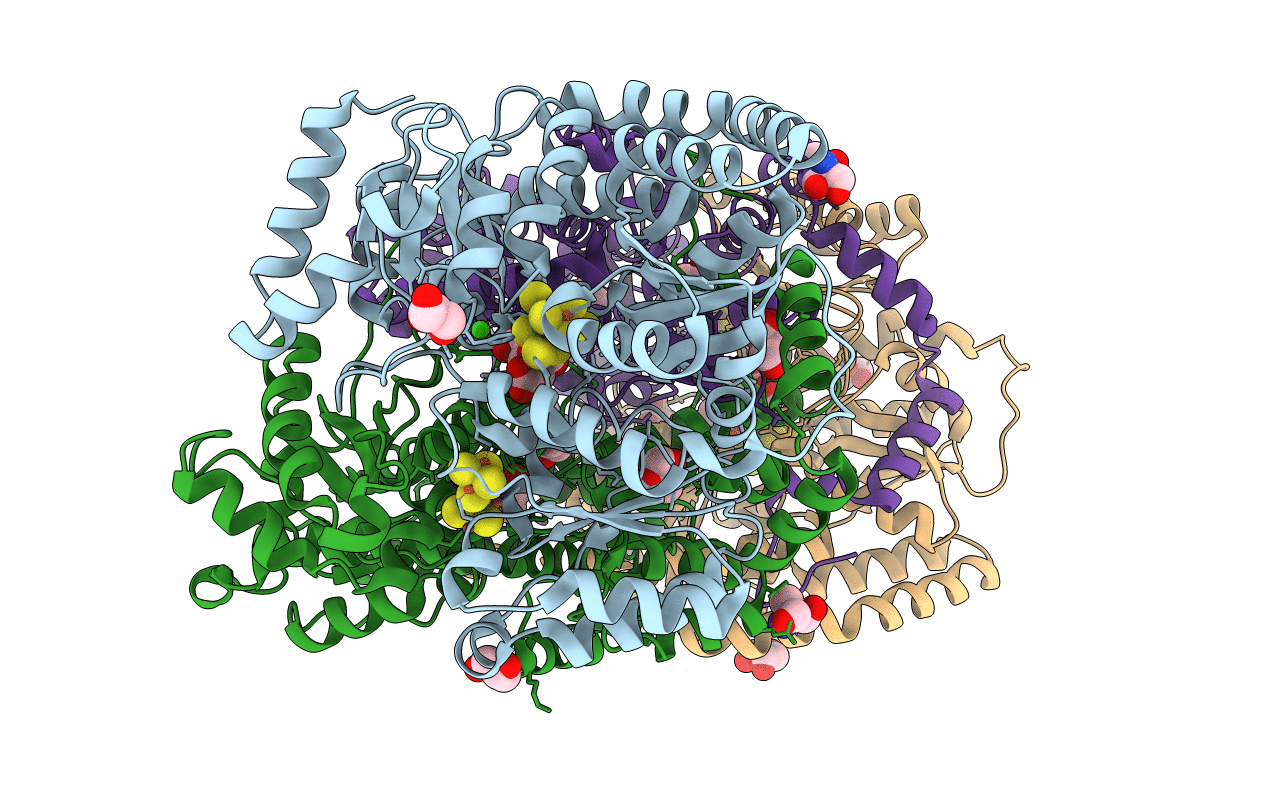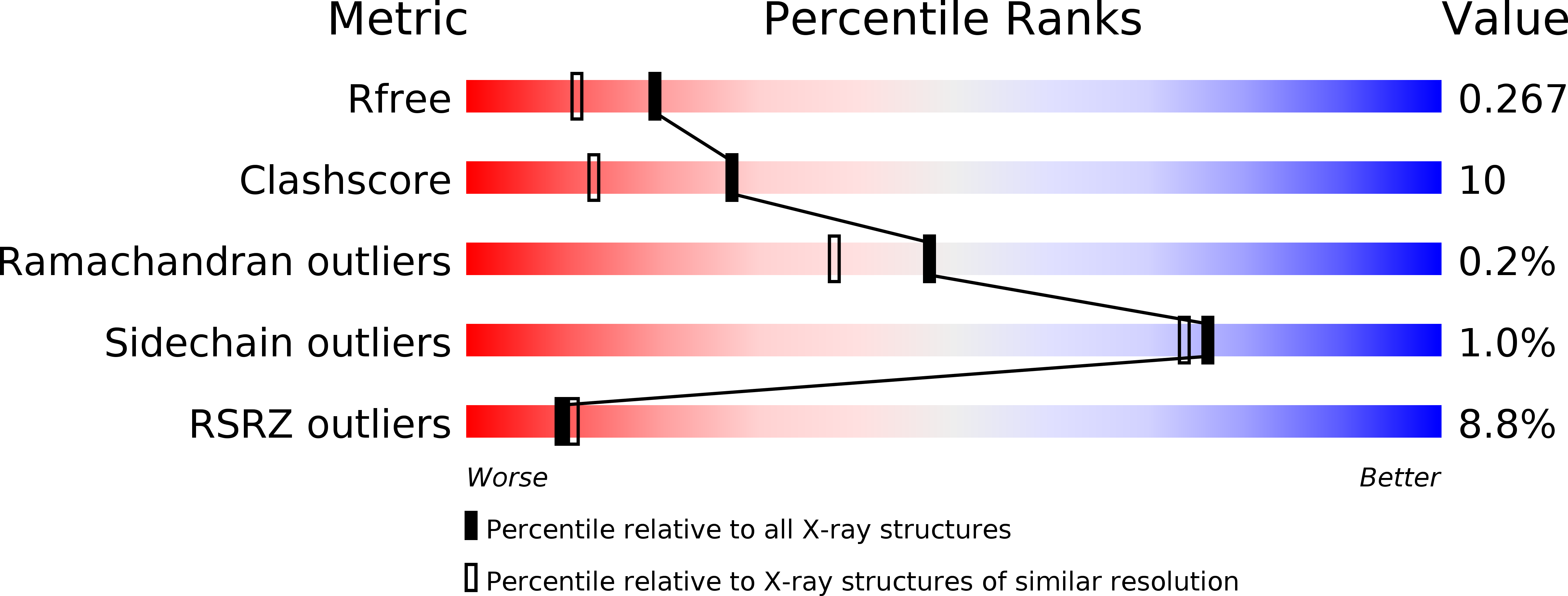
Deposition Date
2015-01-17
Release Date
2015-10-14
Last Version Date
2023-09-27
Entry Detail
PDB ID:
4XPI
Keywords:
Title:
Fe protein independent substrate reduction by nitrogenase variants altered in intramolecular electron transfer
Biological Source:
Source Organism:
Azotobacter vinelandii (Taxon ID: 354)
Host Organism:
Method Details:
Experimental Method:
Resolution:
1.97 Å
R-Value Free:
0.26
R-Value Work:
0.21
R-Value Observed:
0.21
Space Group:
P 1 21 1


